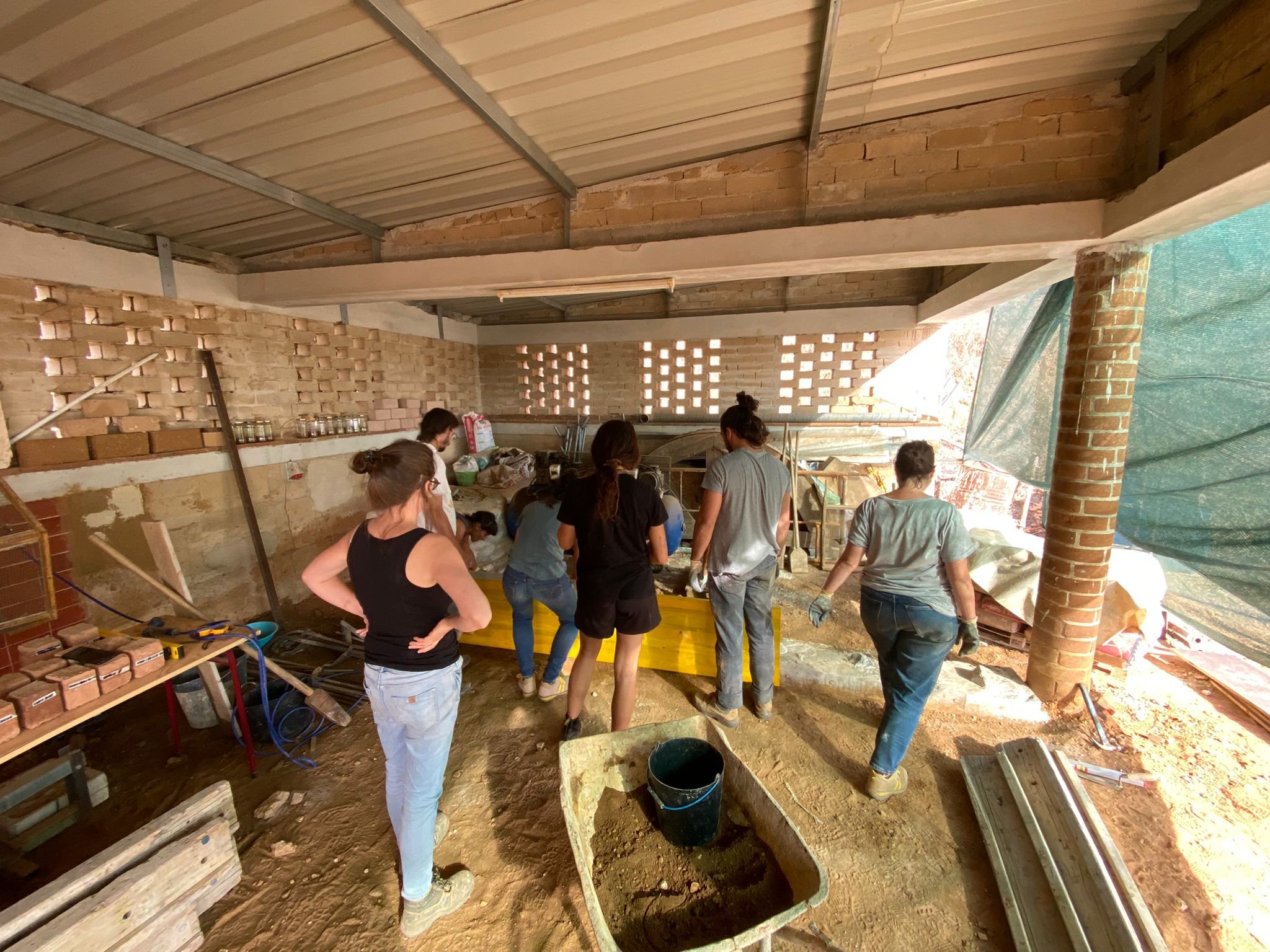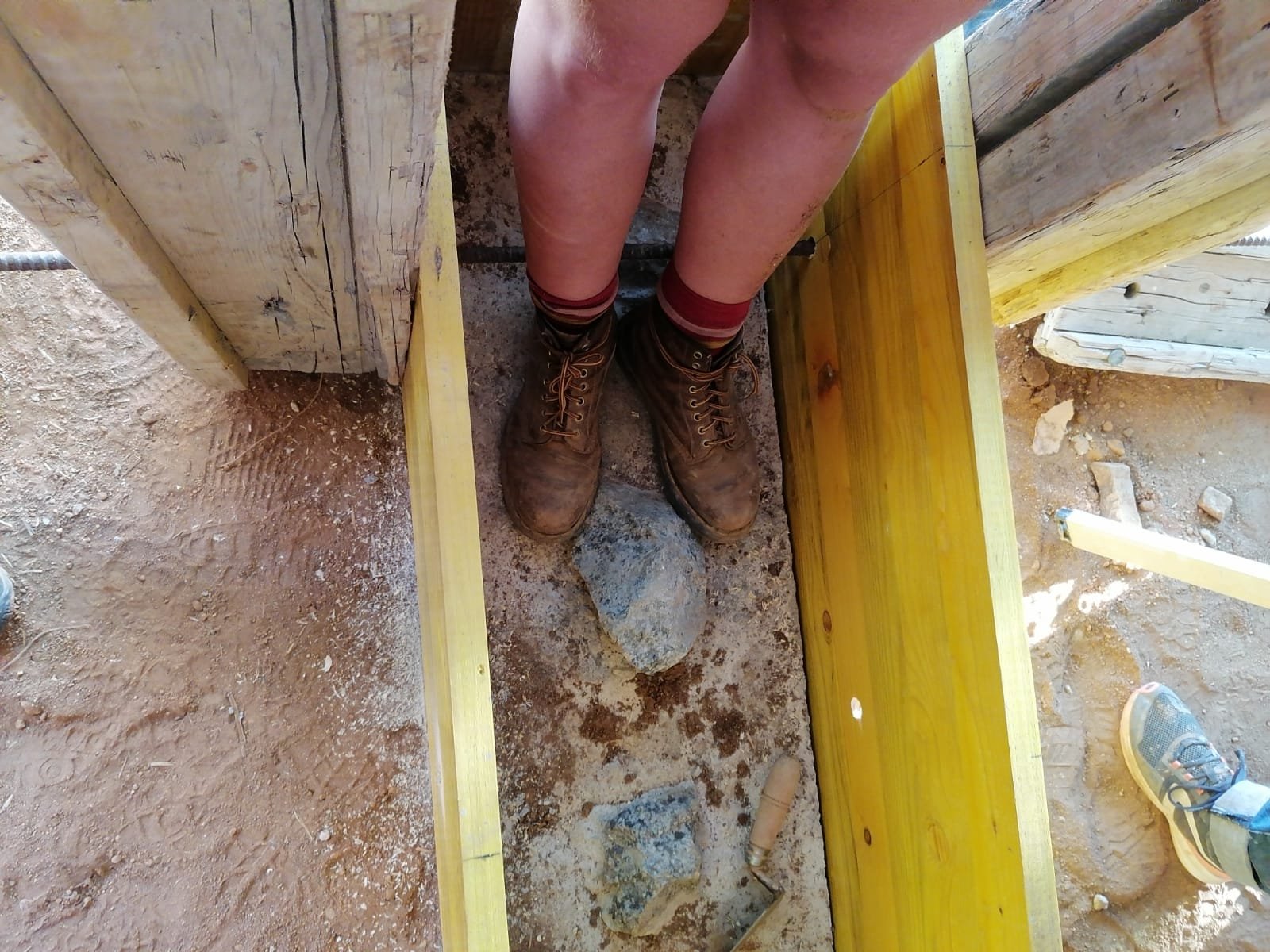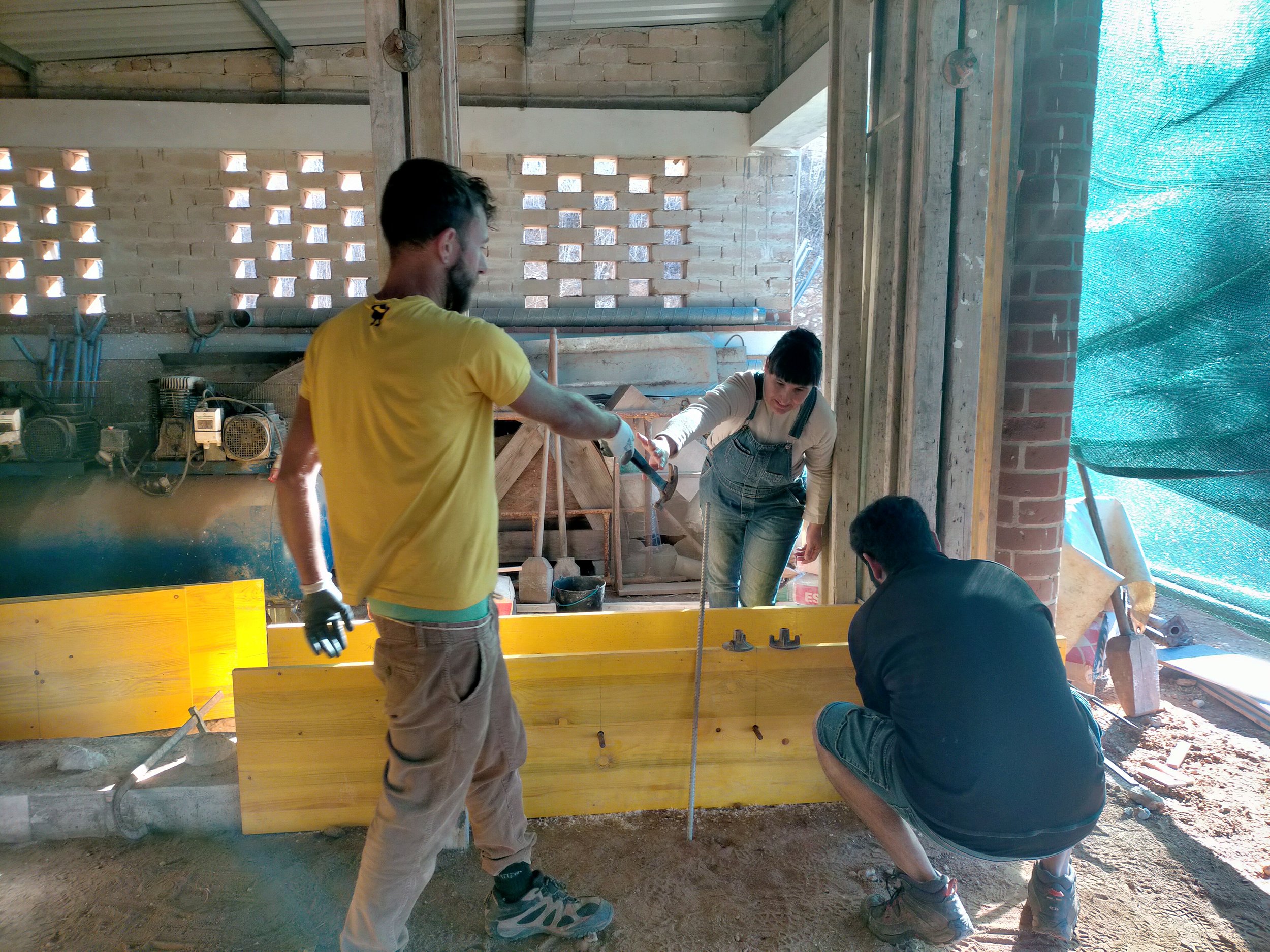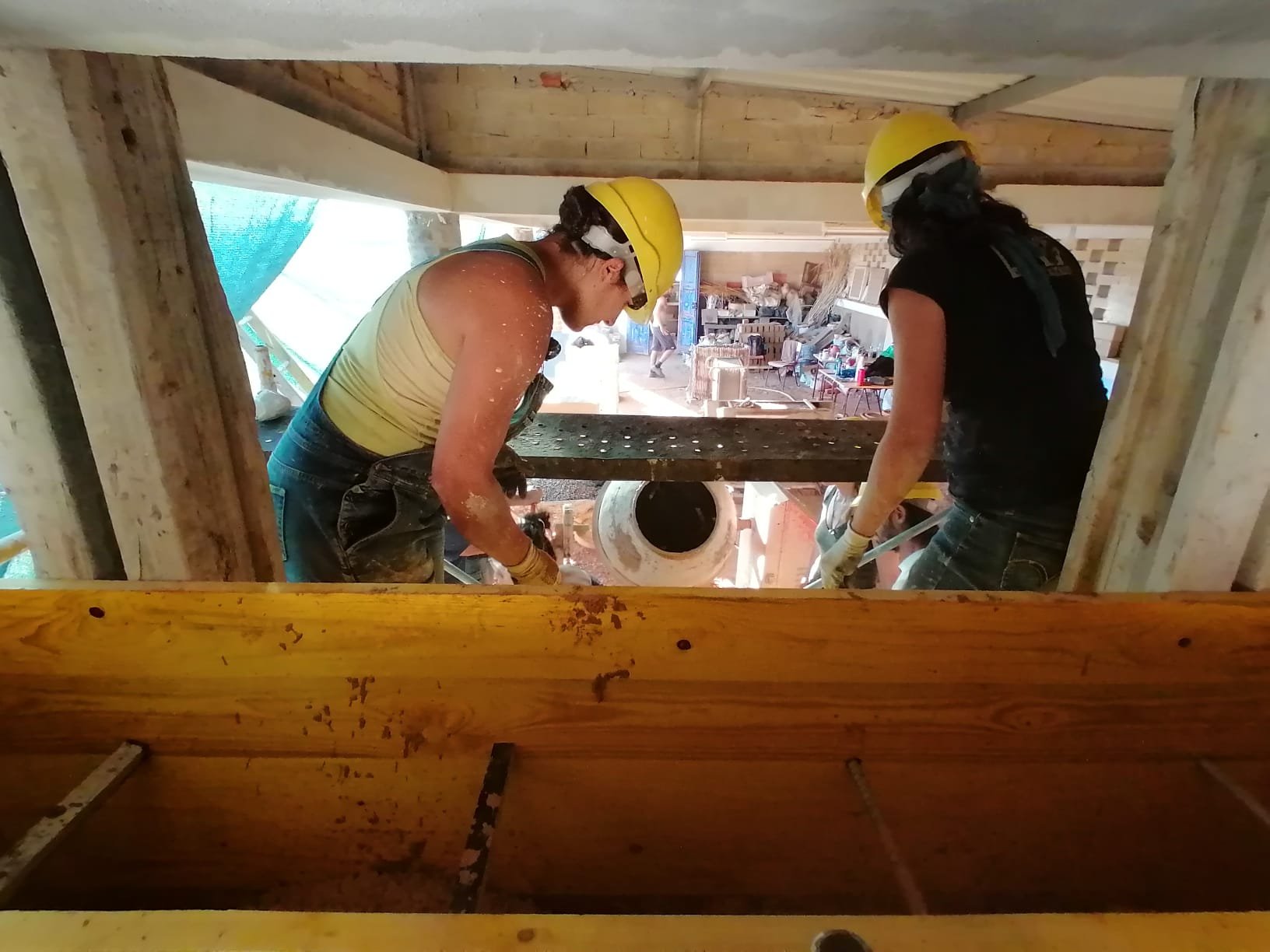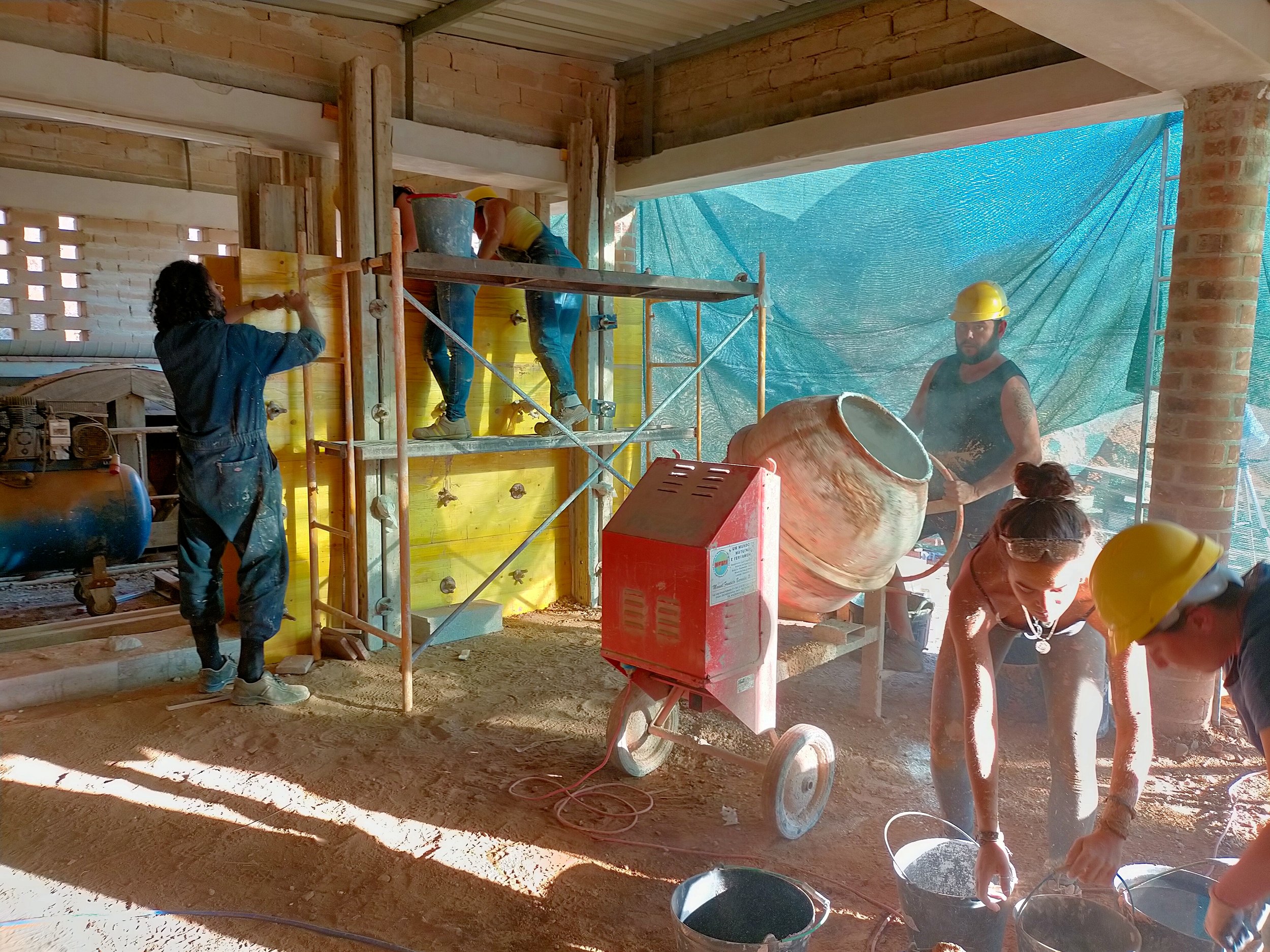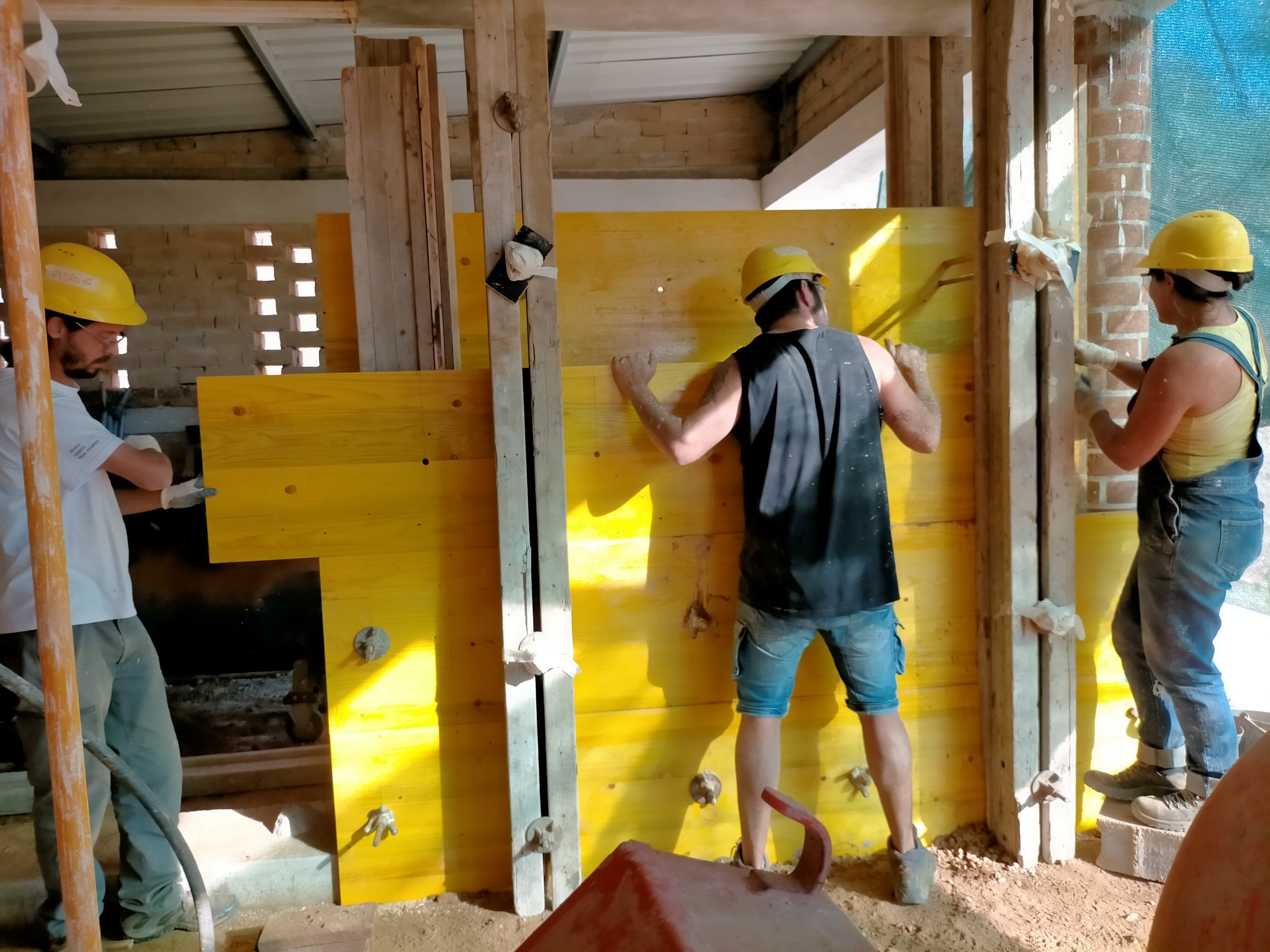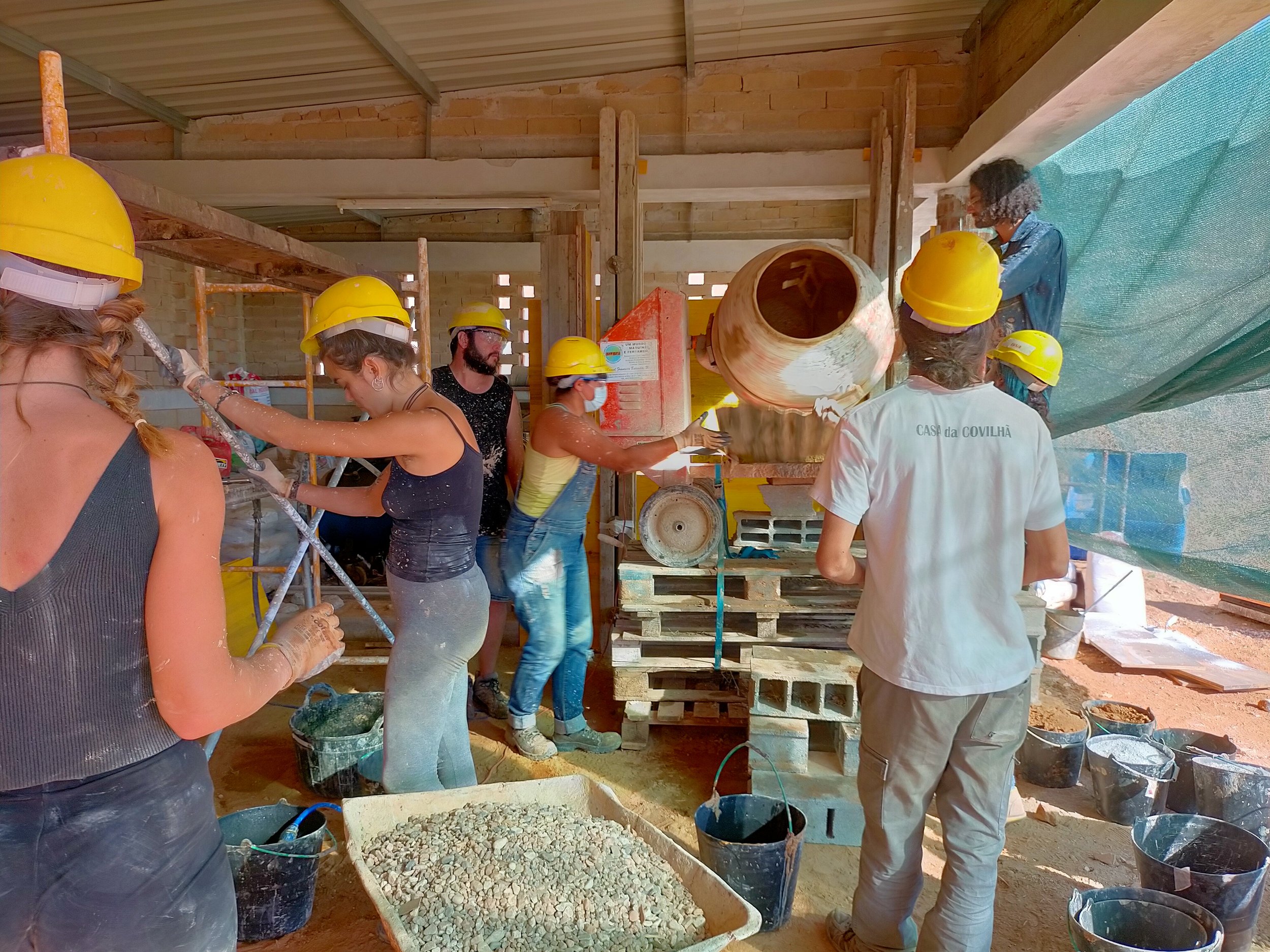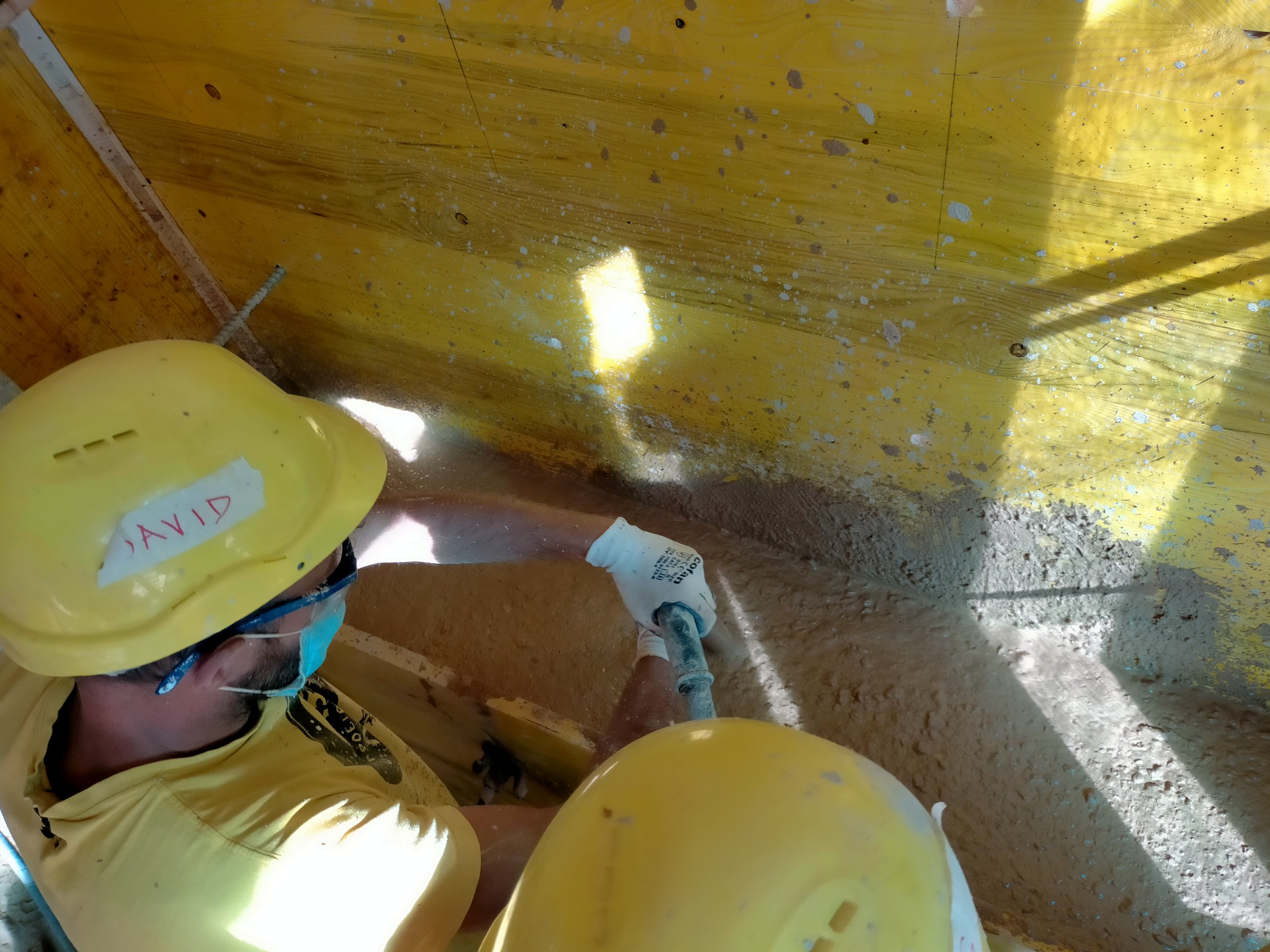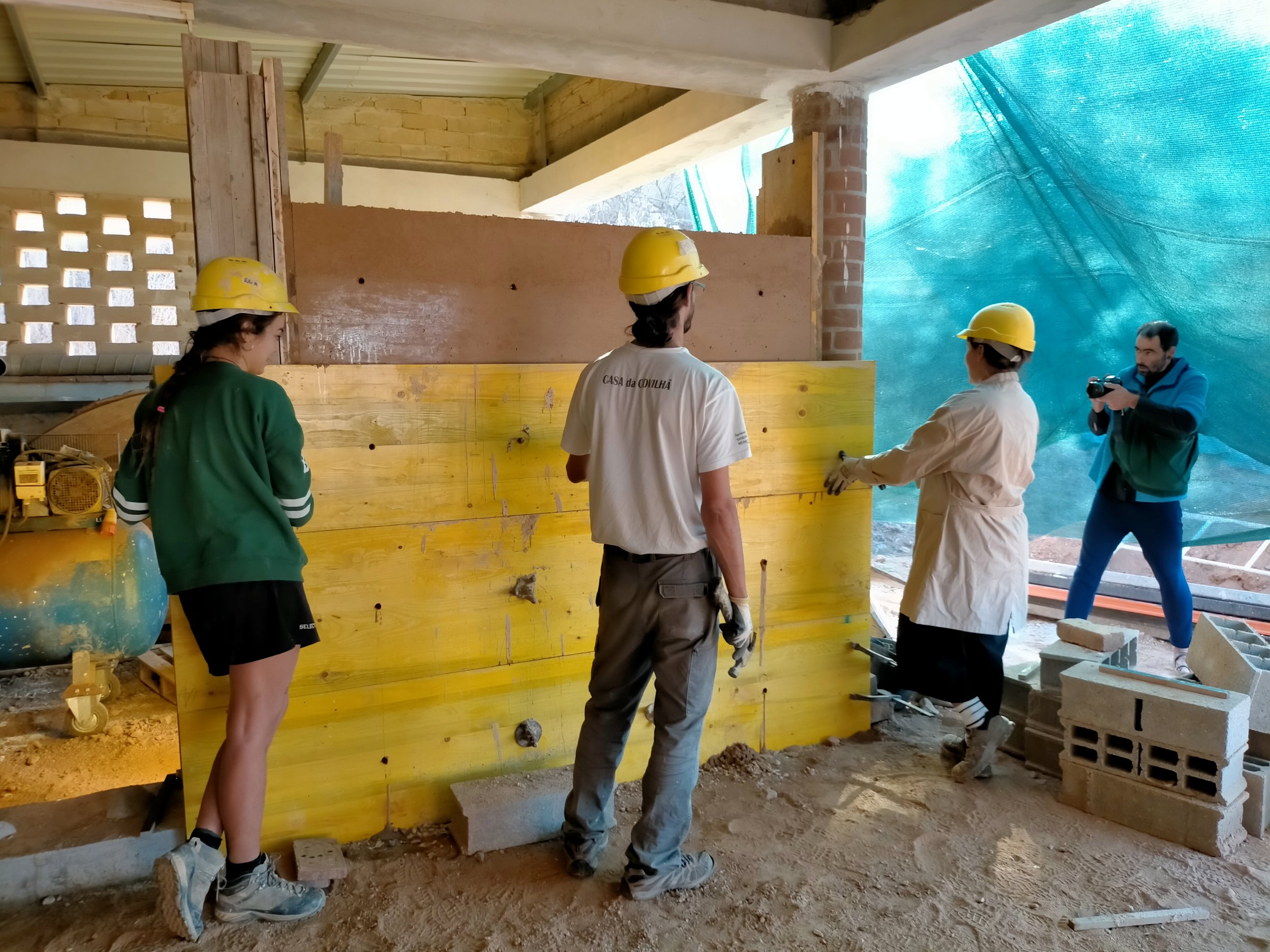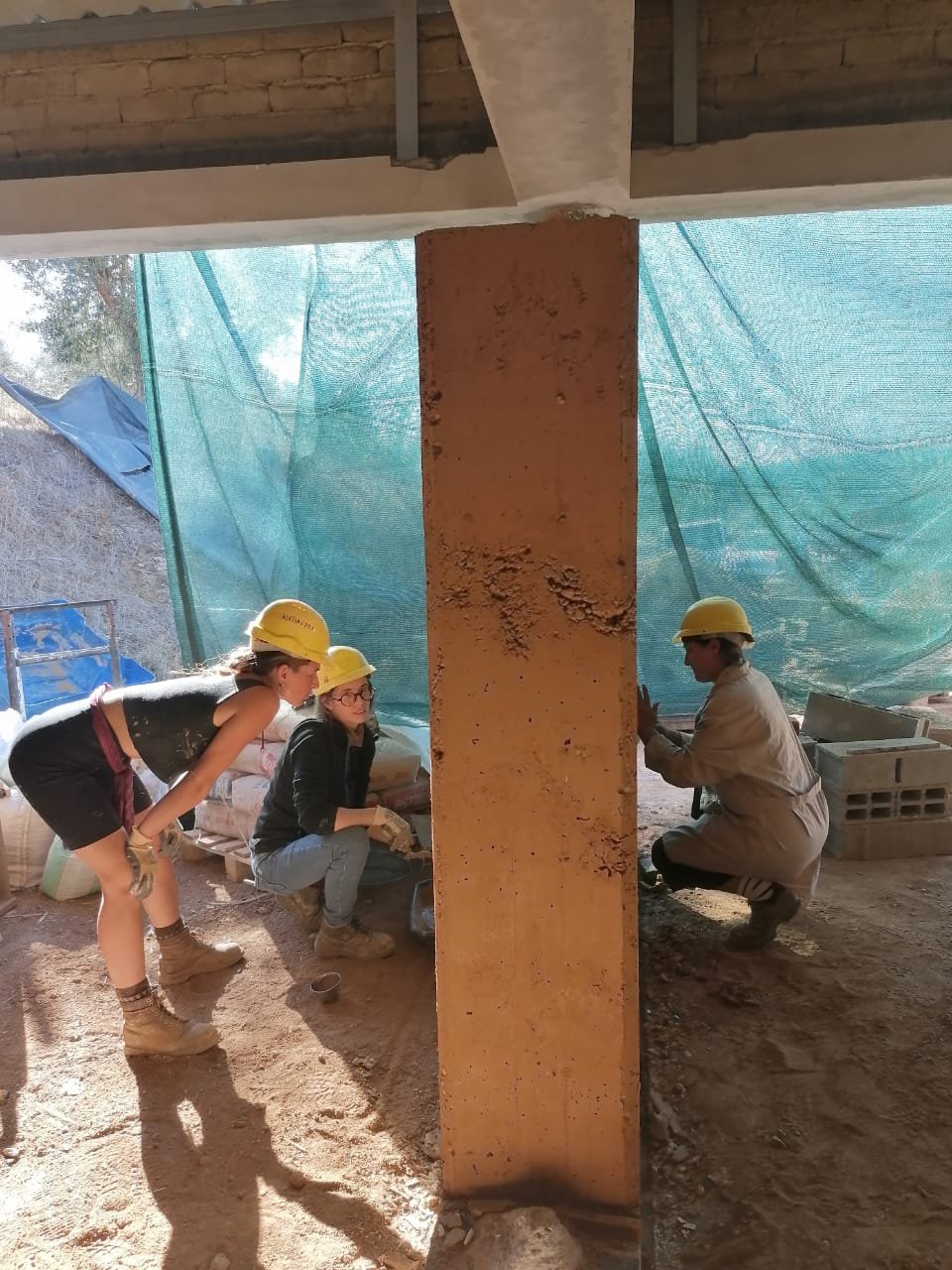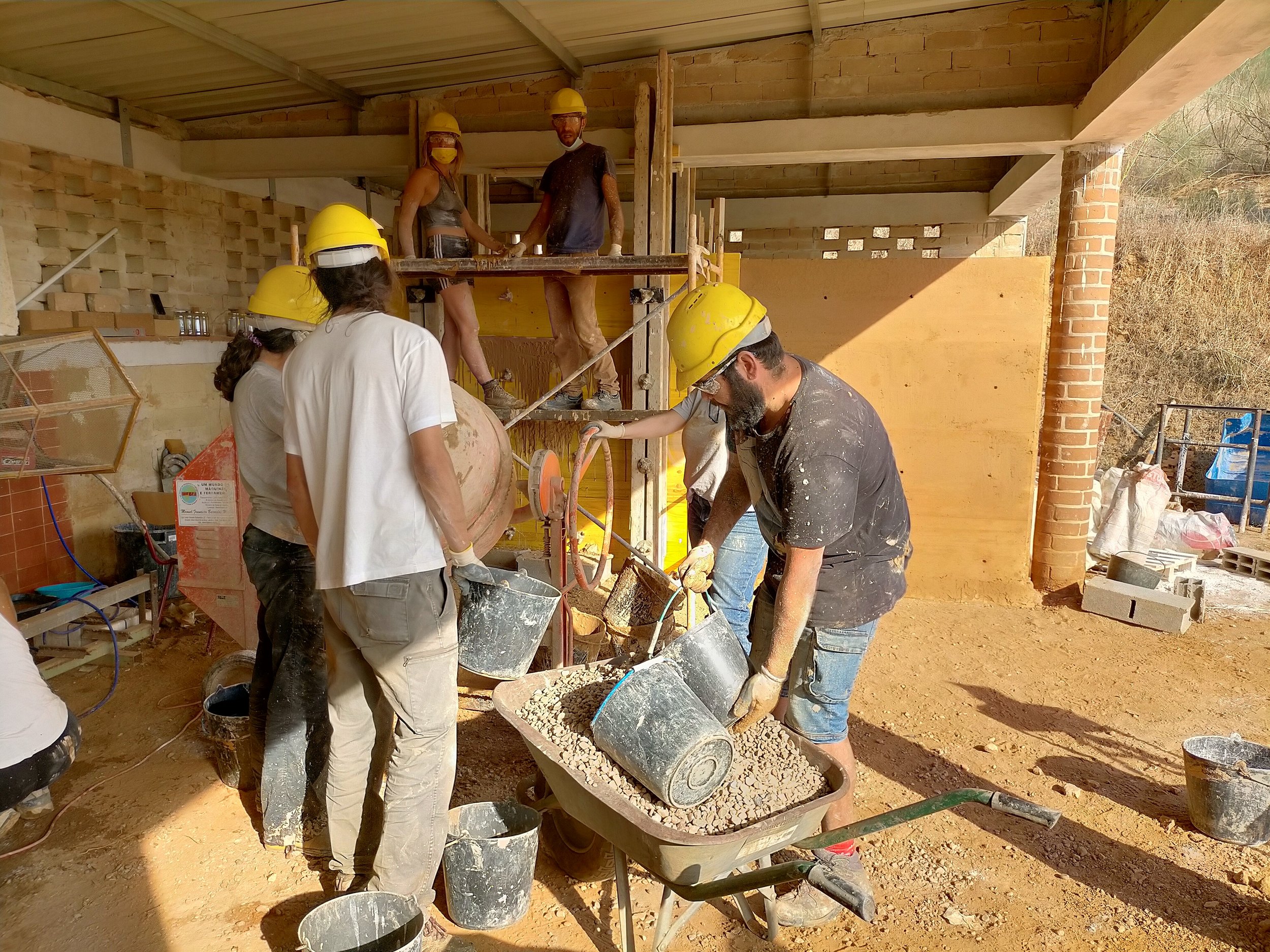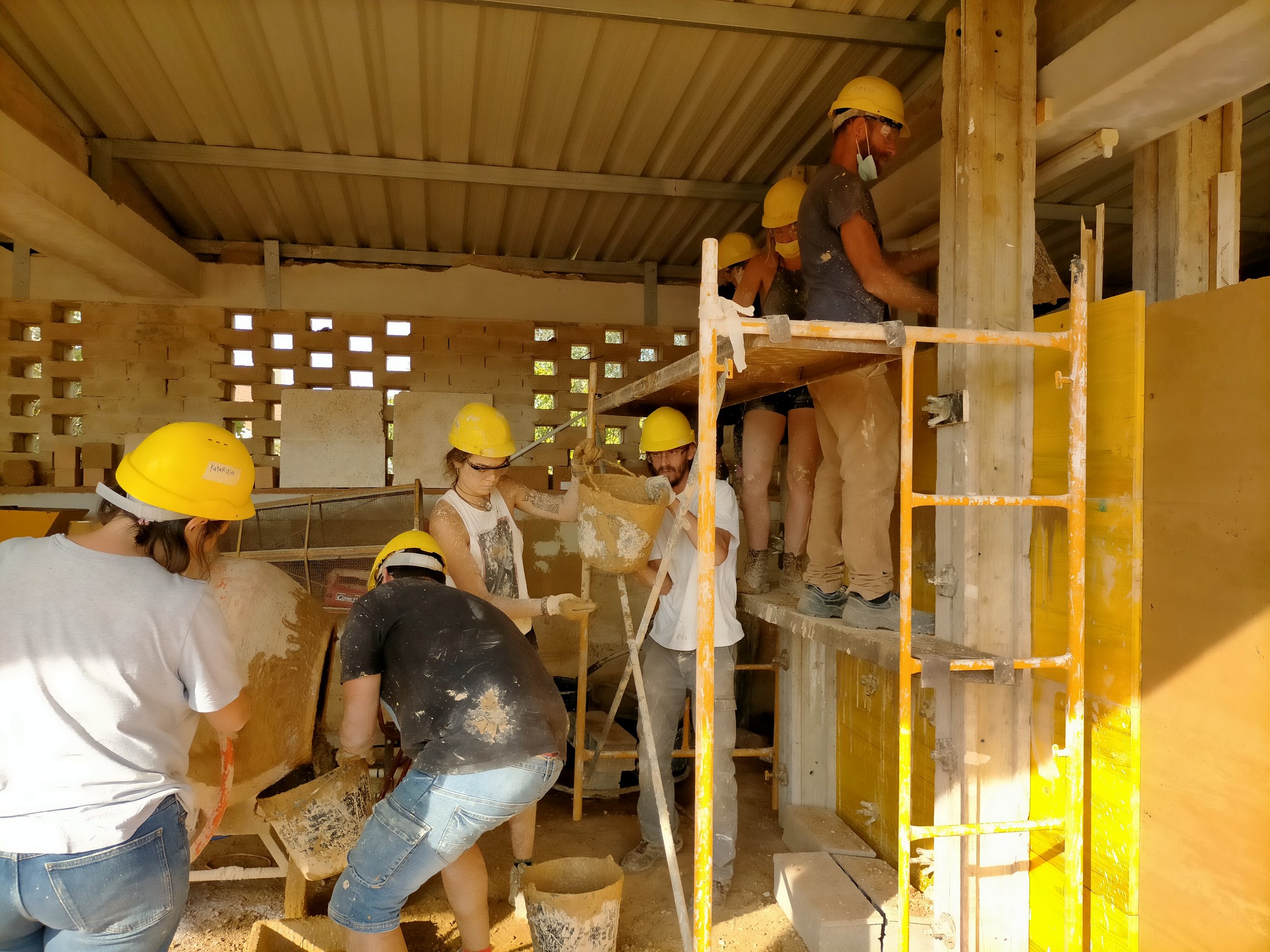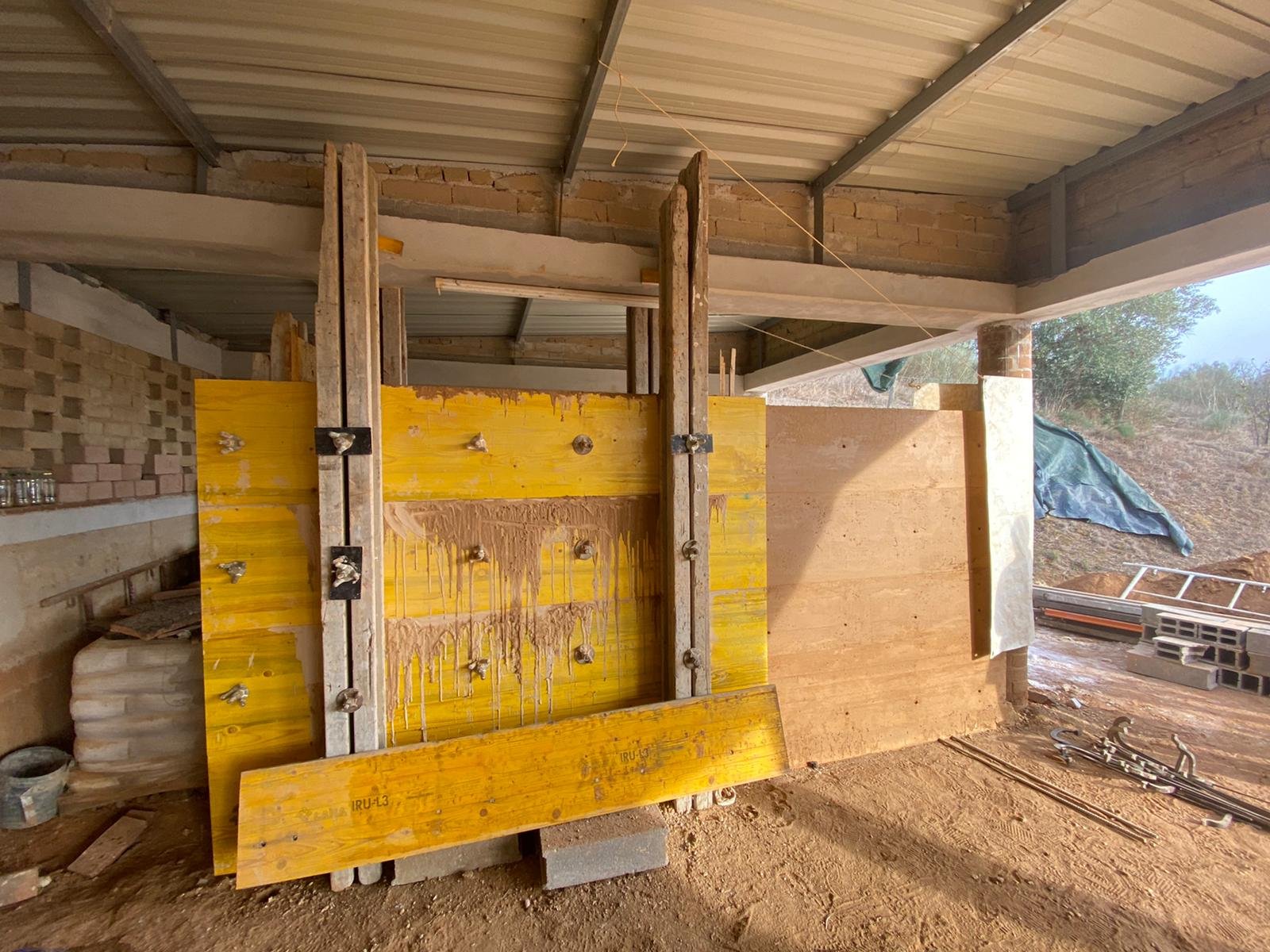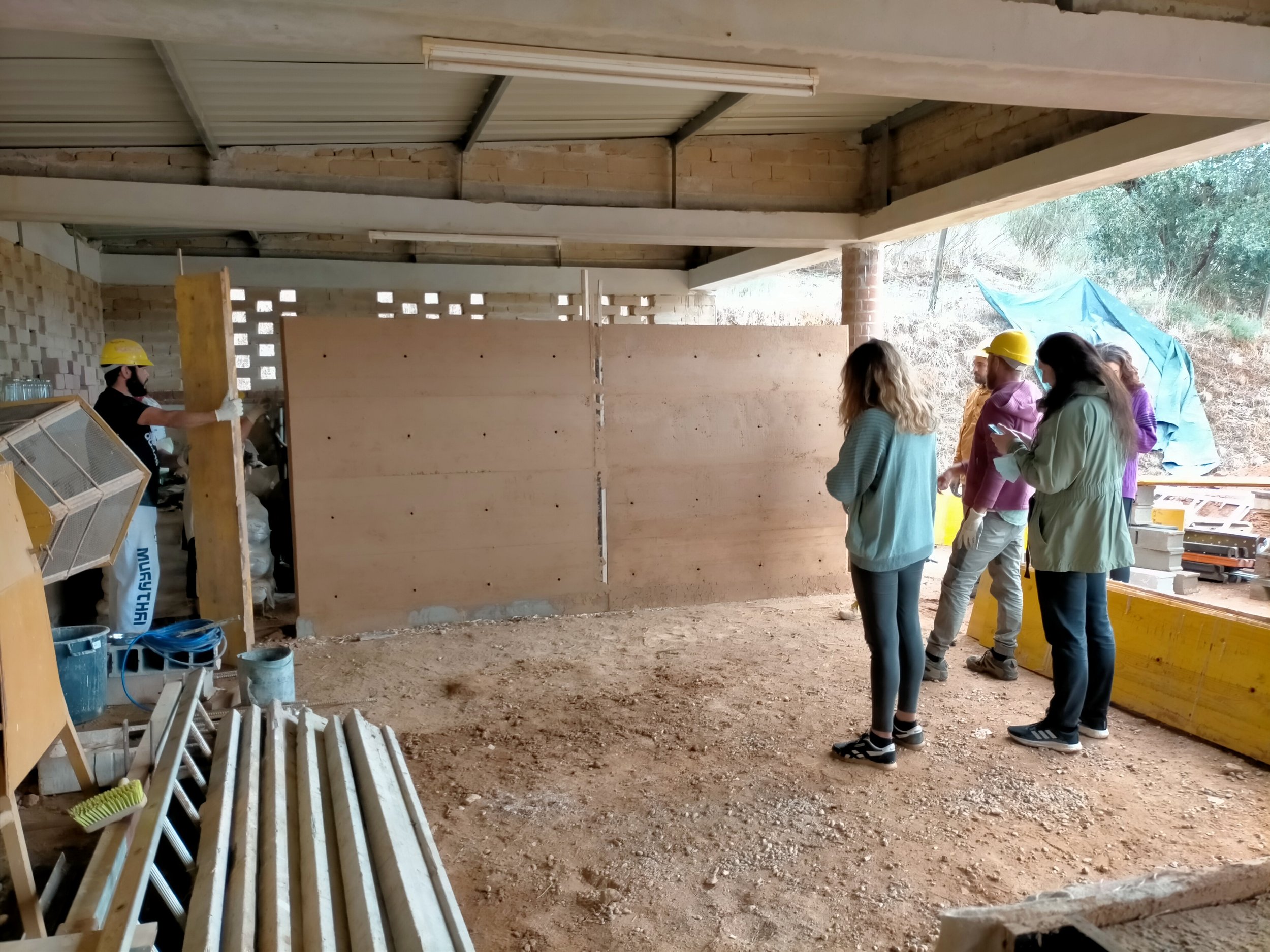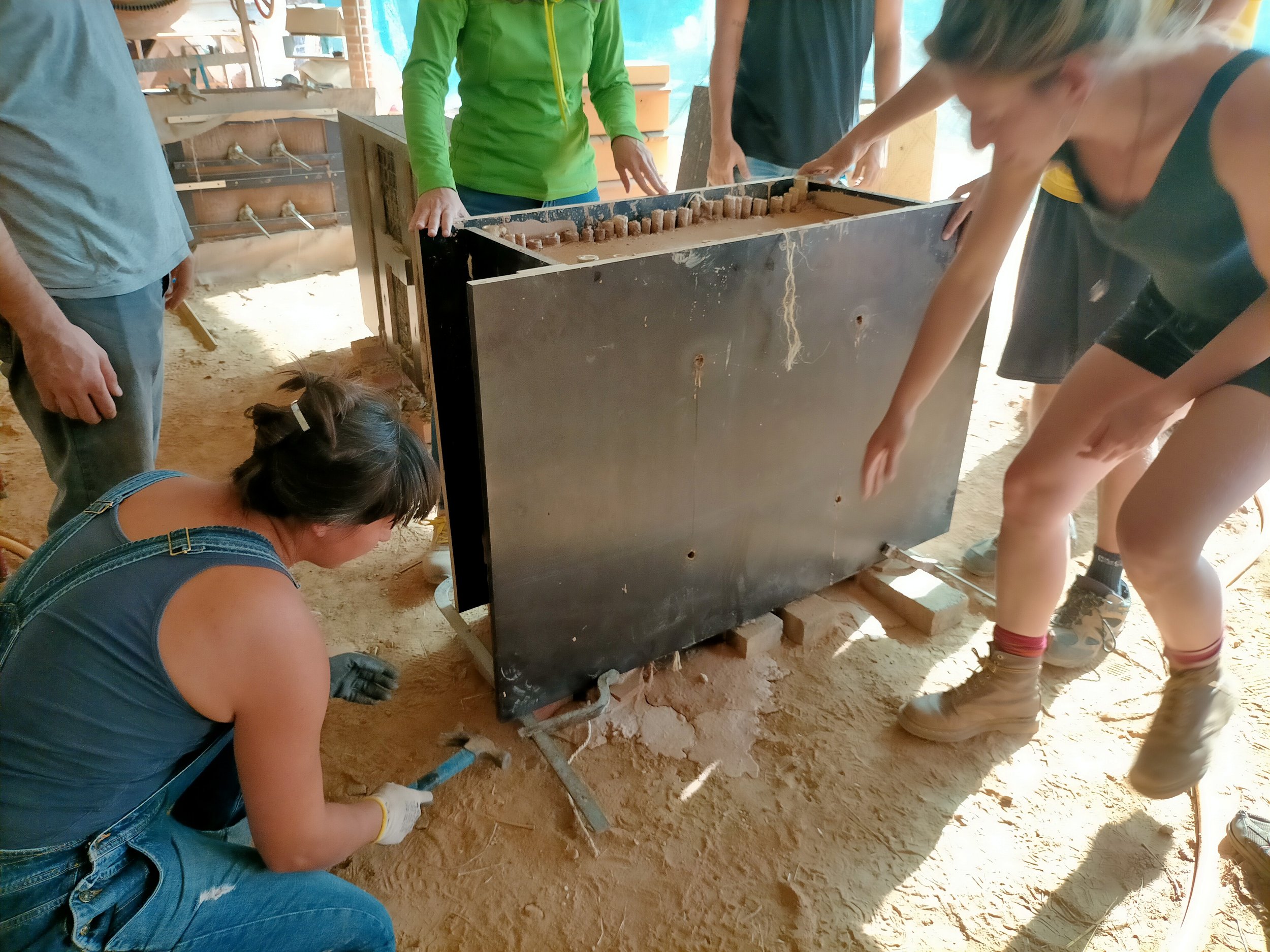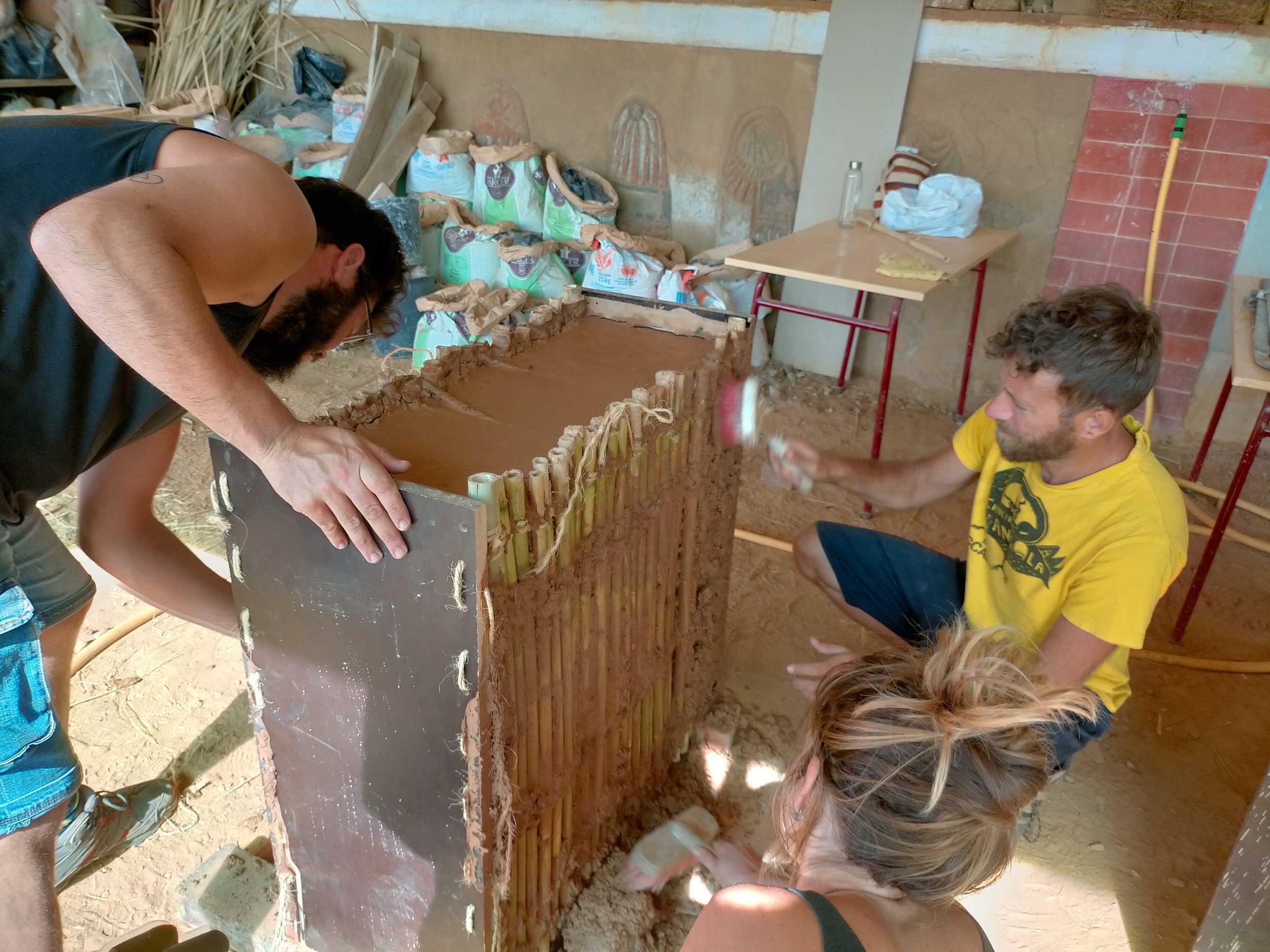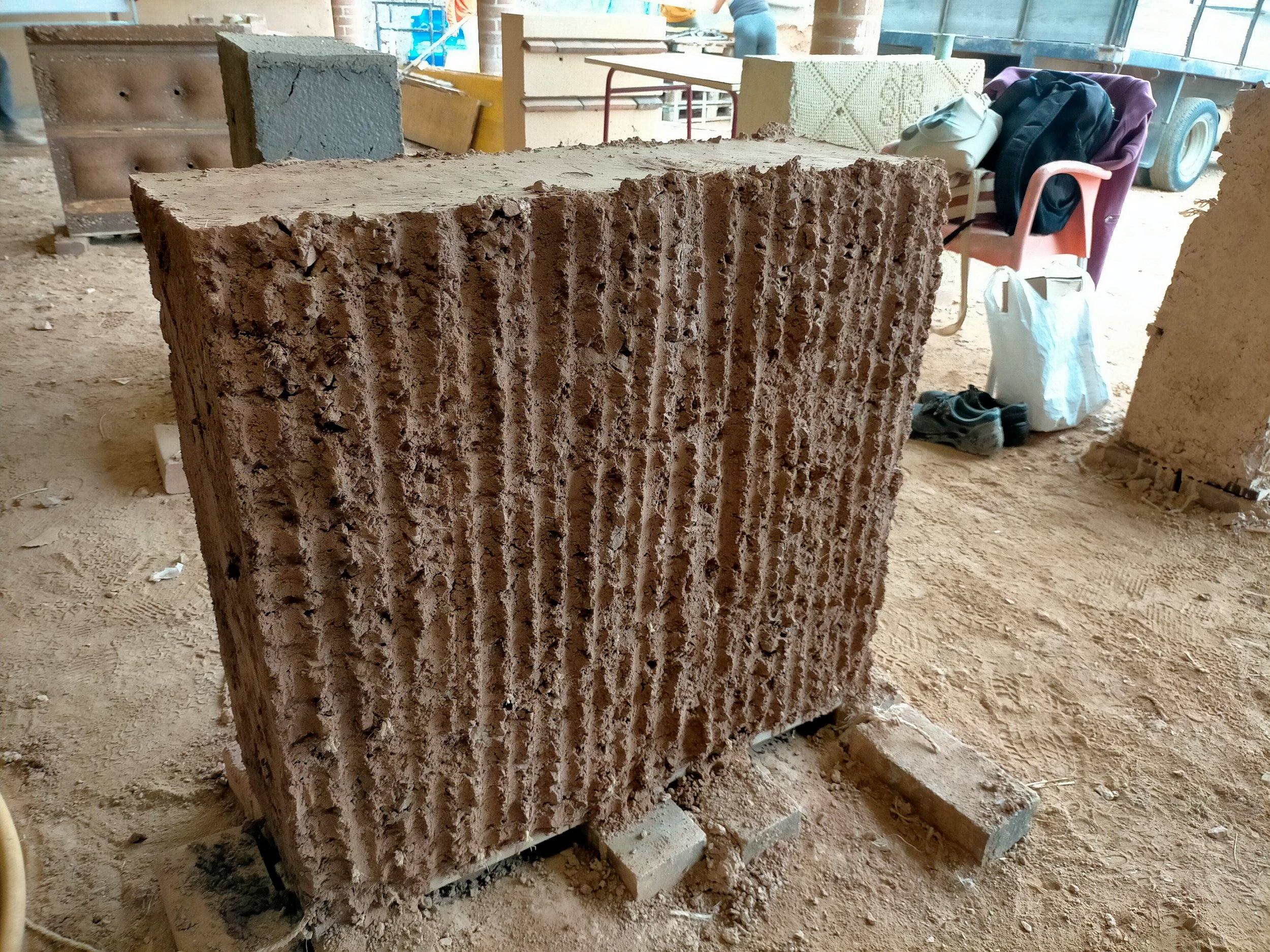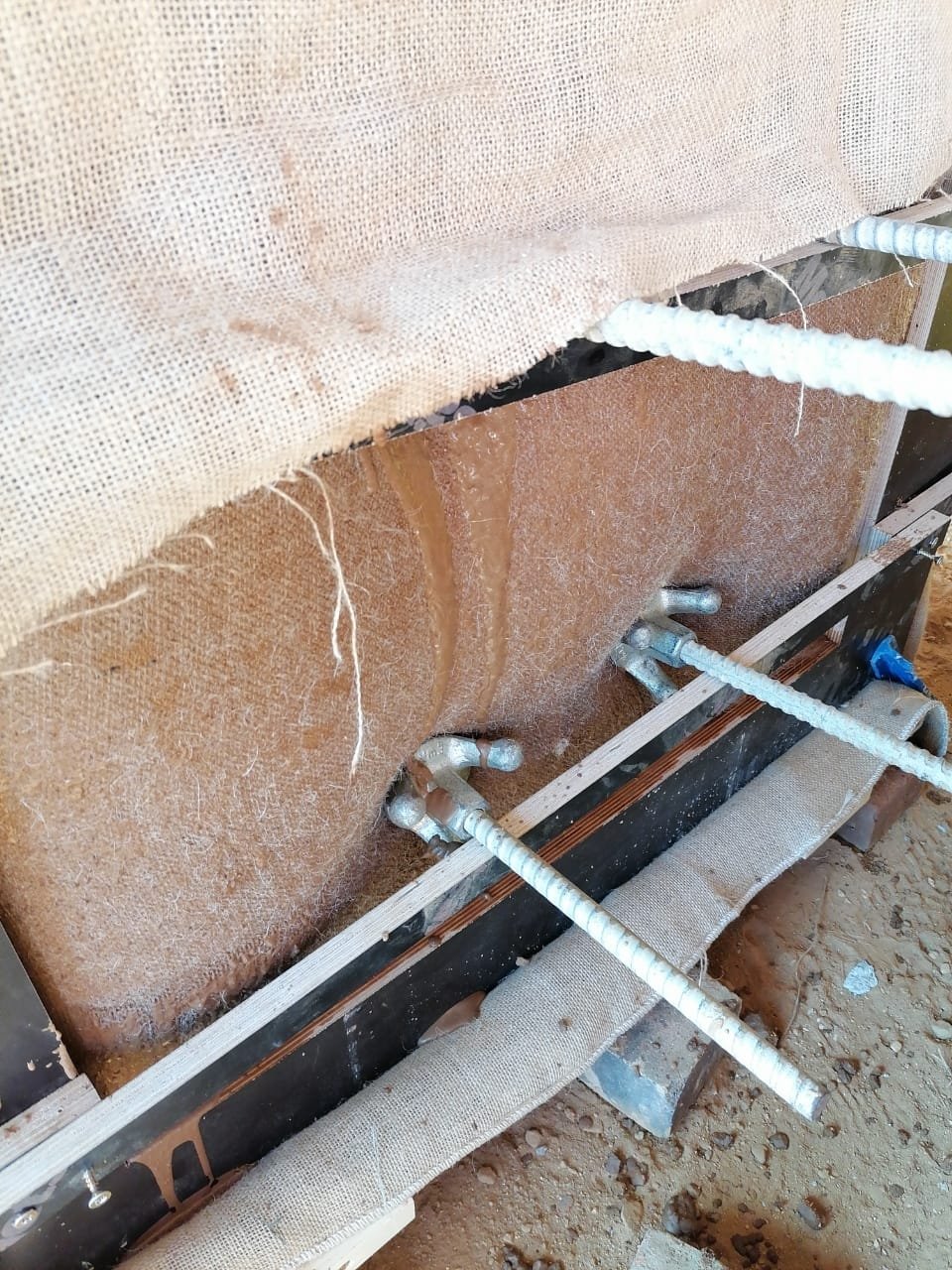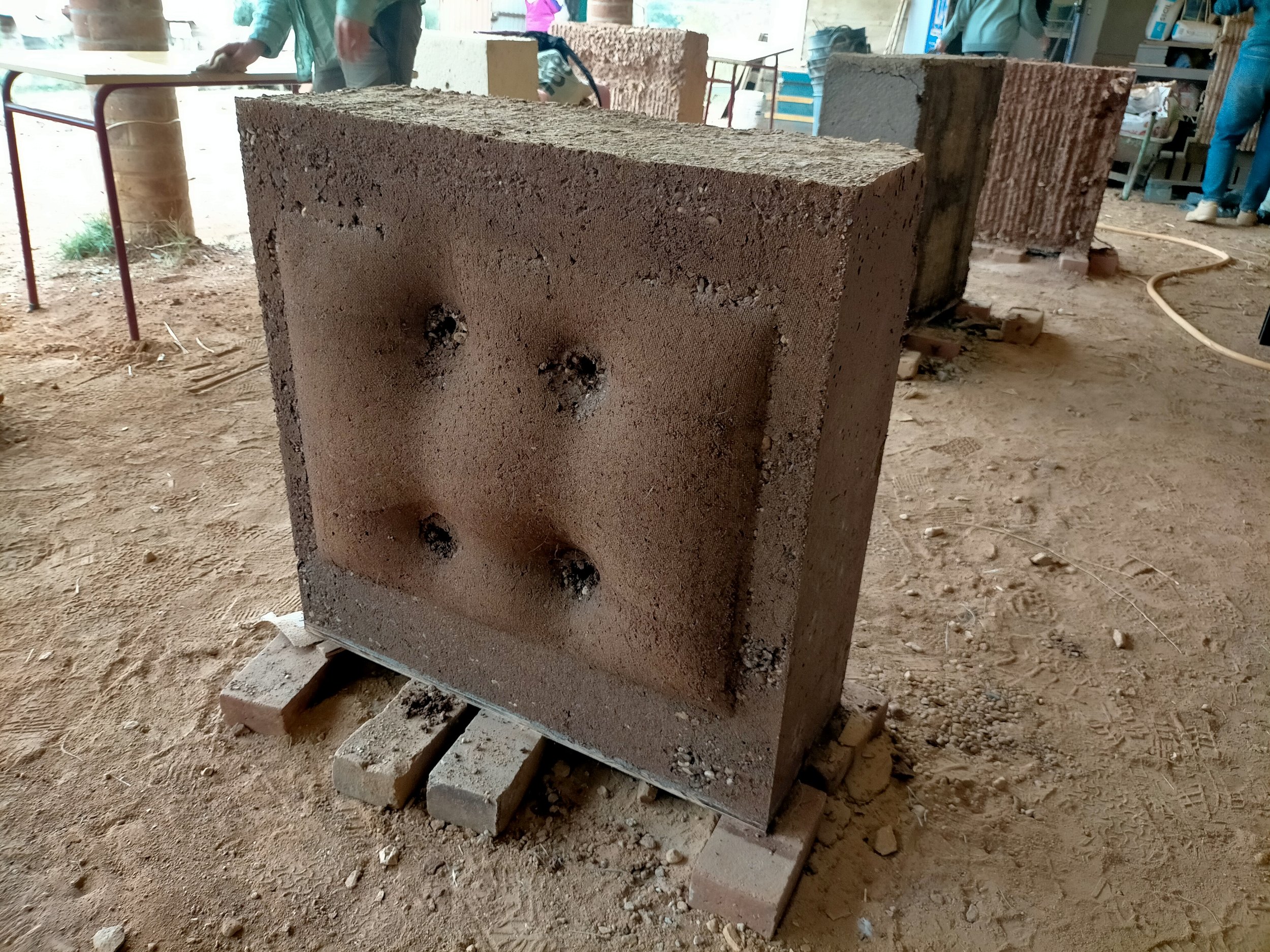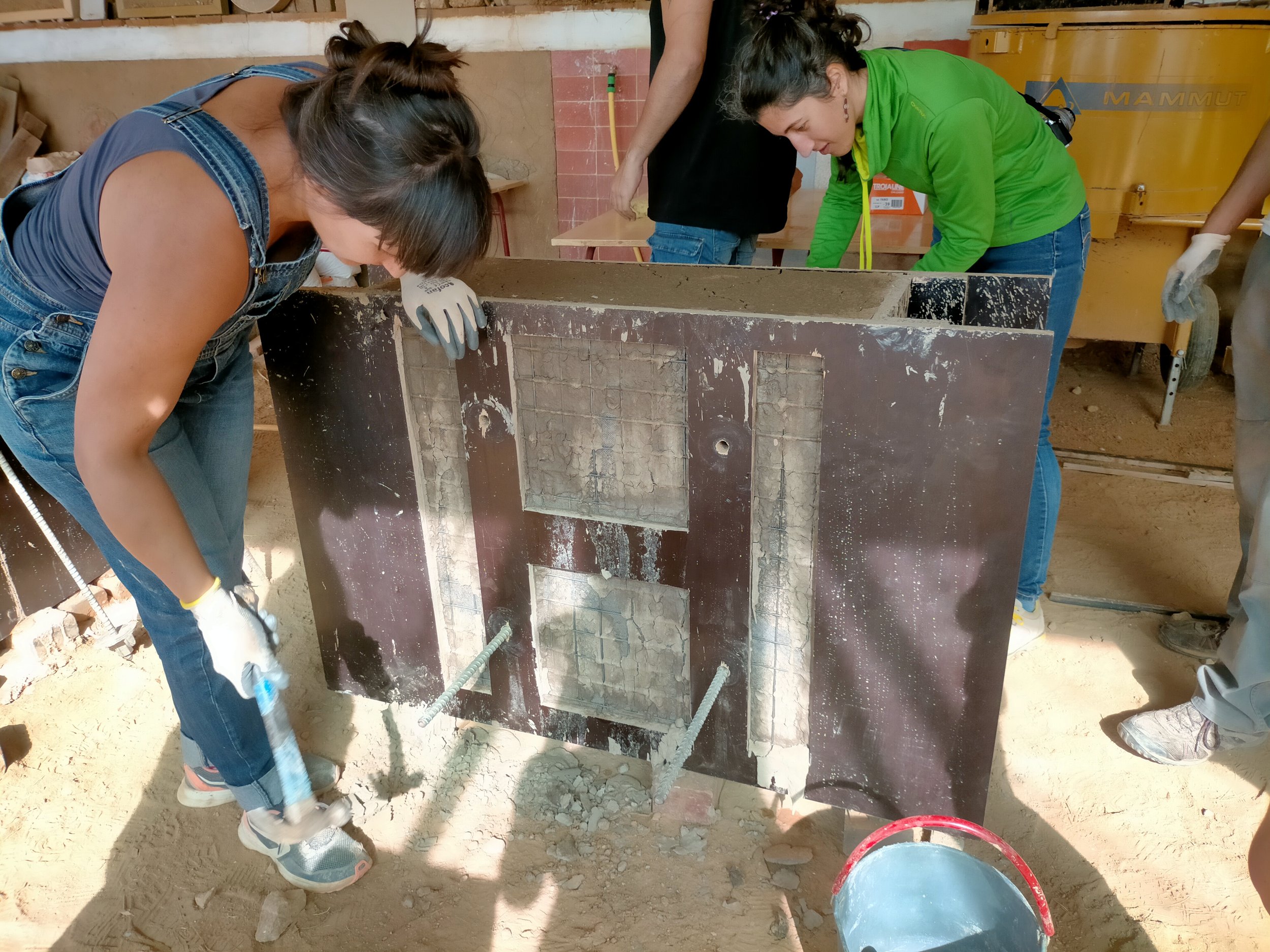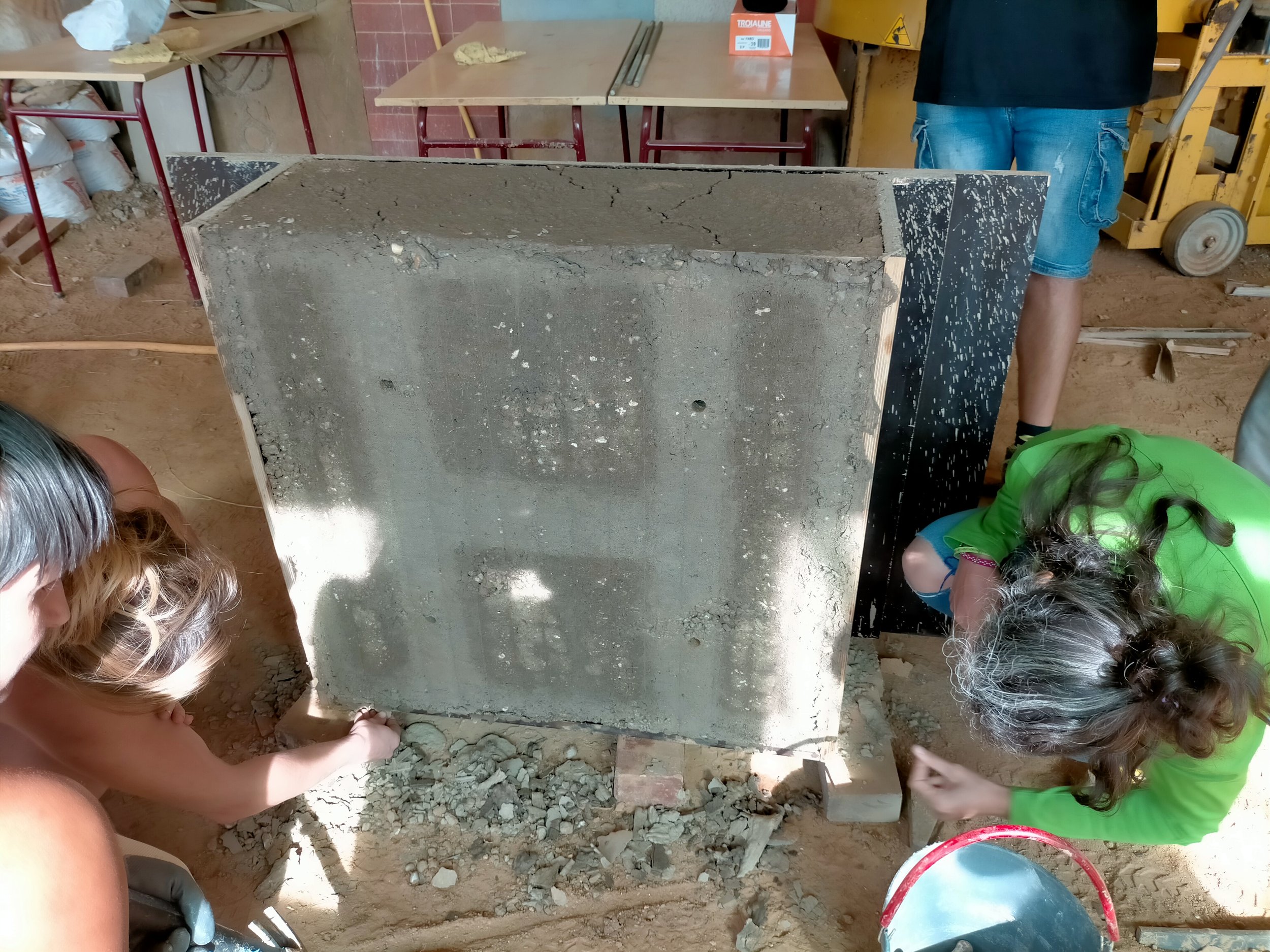A Wall in Poured Earth
During the fourth and last week of our Workshop#4 on Poured Earth we wanted to offer the participants the possibility to experiment building with this technique at scale 1:1, with real building site conditions. As the Earth Lab needed a new partition in order to optimize the storage spaces, we had planned to build this wall with Poured Earth and had previously realized a stone and cement concrete foundation. The challenge was that we had only 5 days to build this element of 2m high x 4m long, so we should:
day 1: mount the formwork (half part of the wall)
day 2: prepare the mix, pour and vibrate it
day 3, 4 and 5: take the formwork out and repeat the operations for the second part of the wall
In these conditions it wasn’t possible to rely on a breathable formwork strategy so we chose to implement based on hydraulic binders. Nevertheless, we chose gypsum which is far less contaminating than cement and realized the formulation developed by Nelia’s group during the second week: earth, gravels, gypsum (8% of total mass) with retarder and water.
The formwork was built with three-ply boards holded together with the same metal bars we used for the prototypes, and reinforced with wooden I-beams. On the back side, we mounted the whole formwork (4 boards), while on the front side we added the boards gradually in order to be able to pour the mix until the height of the second board directly from the mixing machine, and then transfering the mortar to buckets and realizing a “human chain” until the top part of the wall.
The group of participants was organized in 3 rotative teams: one team preparing the buckets of raw materials, another team mixing it in the machine and the third one pouring and vibrating the mix.
Thanks to this organization we managed to stick to our program and we reached our objective of having the wall ready for the end of the week!
In the meanwhile we also managed to take out the formworks of the prototypes poured the previous week, and to attend to 2 other Guest Lectures from:
Sergei Jermolieff + Solanito Benitez from Mínimo Común Arquitectura (Asunción, Paraguay)
Daria Ardant from ETH (Zürich, Switzerland)
As the previous online lectures we had, they have been recorded and will be soon uploaded on our Youtube Channel, as well as the didactic videos shooted during the workshop to describe all the formulating and building process.
The workshop ended up with an inauguration event in which around 50 persons from the local community and from the surroundings came to see and learn about our experimentations. It was the first and only day of rain of the workshop, which didn’t prevented us to then celebrate all together in the Convent the end of this beautiful co-creative process !



